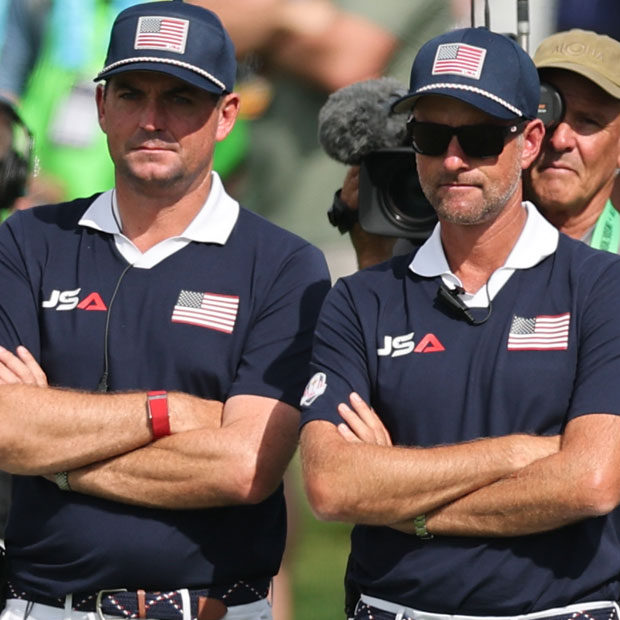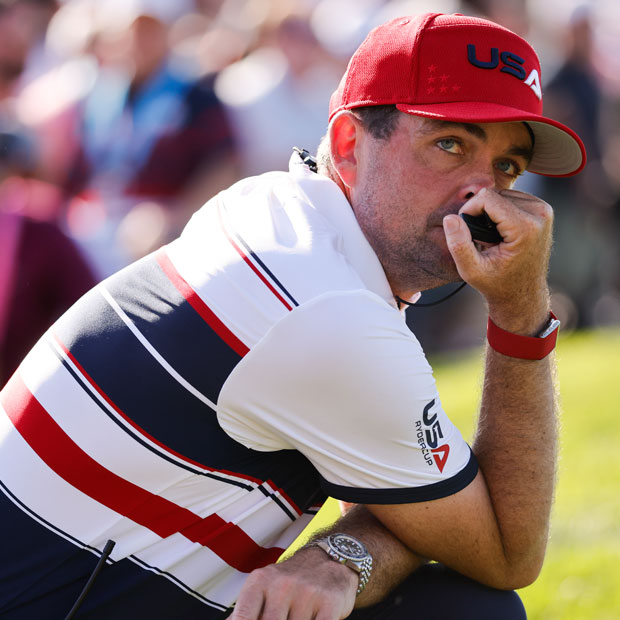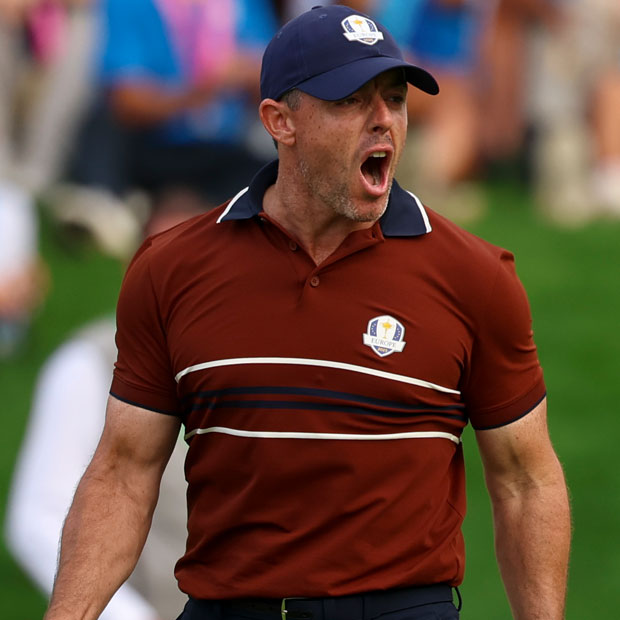The Ocean Course at Kiawah Island
The Ocean Course at Kiawah Island is a rare breed: a public golf course on a jaw-dropping stretch of coastline and the host of some of the most prestigious professional events

Kiawah Island, South Carolina, USA
Pete and Alice Dye (original design, 1991)
Semi-Private
$$$$
A Lowcountry Landscape: The Ocean Course at Kiawah Island, 2021 PGA Championship Host
Re-Dyeing Kiawah Island
Superintendent Series: Jeff Stone on Kiawah and the PGA Championship
Designed and built to host the 1991 Ryder Cup, The Ocean Course at Kiawah Island has a long history of championship golf, and rightfully so. The construction of the course was nothing short of a nightmare thanks to Hurricane Hugo, but it was completed just in time to perplex the greatest players from the United States and Europe. The penal features, ever-present wind, and visual deception rigorously test the best players in the world. The course was brutally difficult in the 1990s but has since been altered to better accommodate resort guests. Built on sand and marshland with water views from nearly every hole, The Ocean Course immerses players in the natural setting of the Mid-Atlantic coastline. Pete and Alice Dye’s creation provides both a majestic experience and a grueling test of golf.
{{content-block-course-profile-ocean-course-kiawah-001}}
Take Note…
Recycle. The Ocean Course is an impressive course from above the ground, and even more so below the surface. Dye installed over 14 miles of underground piping to collect the excess irrigation water and recycle it back into the system. This reduces water usage while helping contain chemicals and fertilizers to the course property, preventing them from leaching into surrounding marshlands.
Ahead of the curve. Pete Dye was a forward-thinking man, and his design at Kiawah shows it. He built The Ocean Course to be ultra-variable in terms of setup options in order to accommodate strong winds or calm days. He planned out areas for future tees to be built, allowing the course to stretch to 8,000 yards. Dye knew pros were getting longer and had the foresight to plan ahead with the tee placements.
The Alice influence. Many designs with Pete Dye’s name attached to them have significant contributions from his wife and partner Alice Dye. Most notable at The Ocean Course was her suggestion to prop up several fairways so players could have unobstructed views of the Atlantic Ocean.
An ocean finish. The original 18th green site was located just short of where the clubhouse sits today. In 2002, Pete moved the green to its originally intended location, 25 yards closer to the ocean and set against the last line of dunes before the beach. It would have been in that spot the whole time if not for incorrectly drawn wetland protection boundaries. Now, when facing the green for approach shots, players look straight toward the Atlantic Ocean.
Favorite Hole
No. 14, par-3, 194 yards
Of the four tremendous one-shotters at Kiawah, the 14th is the most spectacular. After climbing the dune beyond the 13th green to the highest point on property, you are presented with an invigorating view of the entire back nine and the Atlantic Ocean. An excellent time to stop, take a deep breath, and enjoy your surroundings. Certainly preferable to dwelling on your double bogeys.
Favorite Hole
No. 14, par-3, 194 yards
Of the four tremendous one-shotters at Kiawah, the 14th is the most spectacular. After climbing the dune beyond the 13th green to the highest point on property, you are presented with an invigorating view of the entire back nine and the Atlantic Ocean. An excellent time to stop, take a deep breath, and enjoy your surroundings. Certainly preferable to dwelling on your double bogeys.

{{content-block-course-profile-ocean-course-kiawah-002}}
Overall Thoughts
For many golfers, playing The Ocean Course at Kiawah Island is a once-in-a-lifetime opportunity. It is a public golf course on a jaw-dropping stretch of coastline, and it has hosted some of the most prestigious professional events. The cost is steep, but the experience is just as grand.
Playing The Ocean Course feels like an adventure partly because of the linear nature of the routing, which traverses two distinct environments. Each nine features four and a half holes out and four and a half holes back, with the ocean next to players on each inward jaunt. Interesting note: each side has the exact same sequence of pars (4-5-4-4-3-4-5-3-4), but the two couldn’t feel more different thanks to their respective landscapes.
While both nines sit on the ocean’s edge—the back being much closer in proximity—they inhabit unique environments. The front nine winds through a marshland riddled with craggy oaks and tall swamp grasses. The back, meanwhile, plays through an artificial dunescape with almost no trees and lots of exposed sand. Nevertheless, both sides are well-adapted to their specific setting, easily blending into the Lowcountry landscape.
The front begins with a generous opener, introducing players to the type of design features and strategic questions to come: large waste areas set below the playing surfaces, repelling greens, and angles galore.
On No. 2, Dye slaps the test on the desk and forces you to perform. This double-dogleg par 5 challenges everyone from the elite pro to the high handicapper while incorporating Lowcountry trademarks into the design. Off the tee, players are faced with a diagonal fairway and a forced carry over a marsh. Cutting the corner and carrying the bunker provides a perfect angle into the well-guarded green, but going just slightly too far right means being blocked out by a stand of oaks. A layup forces you to choose whether or not to carry the narrow marsh-ditch that bisects the fairway 100 yards short of the green. Once again a tree defends the right side from short of the ditch. The dynamics of this hole allow it to be stimulating for all types of golfers, and that’s what makes it so interesting to play. It also incorporates the natural elements of the terrain to create strategic quandaries while also providing options, risk, and reward.
{{content-block-course-profile-ocean-course-kiawah-003}}
After nine holes in the “forested marsh,” a half-mile shuttle ride to the 10th tee makes it feel like you’ve been transported to a completely new setting.
The creation of the dunescape on the back nine is an example of Pete Dye’s clever use of maximalism. During the planning and design phase, Dye recognized that one half of the property was mostly marshland while the other half was primarily open sandy terrain. This prompted Dye and co. to highlight the sandy ground by mimicking a linksy dunescape that appears to have been naturally crafted. The green sites, while pushed up and elevated, are set into dunes, blending well with the surrounding landforms. Many of the bunkers are pressed into dunes, and appear more natural-looking than bunkers on the front, which rise up from the flat ground. Exposed sand bordering every hole creates a feel very distinct from the marshy front nine.
Despite their environmental differences, both sides utilize the same strategic design elements of visual intimidation, preferred angles, and raised features that repel errant shots. All of this adds up to a tough test of golf. While the environment is quite eclectic, the golf course itself has a singular identity: hard.
Since the course was built up to provide acceptable drainage and views of the ocean, a high level of precision is required to play well at The Ocean Course. Fairways sit well above the waste areas, and the greens are elevated above the shortgrass surrounds and bunkers. This means when you’re out of position, recovery is very difficult, and it’s easy to make compounding mistakes. Plus, the wind almost always blows in this seaside setting, introducing additional challenge and unpredictability. Even when a hole seems straightforward, Pete Dye’s design and the elements find ways to coerce mistakes, which can quickly multiply.
Take the third hole, a short par 4 with one of the widest fairways on the course. A waste area and grove of oak trees steer players right off the tee, but taking them on provides a perfect angle into a green guarded by a center-line tree that famously gobbled up Rory’s ball during the 2012 PGA Championship. The green itself resembles a volcano, falling off steeply on all sides with no surrounding bunkers. Dye noted that this green site was natural; he merely shaved the top off an existing knob to create the putting surface. Most players will have a wedge or short iron into this tiny tabletop target, but extreme precision is required to make an easy par thanks to the Atlantic breeze. Even the shortest par 4 at this course can punch you in the face, and the use of visual intimidation and deception at the third sets the stage for the difficulties of the next 15 holes.
{{content-block-course-profile-ocean-course-kiawah-004}}
It’s no secret that Pete Dye loved obscured sightlines and awkward angles. These elements cause trepidation for golfers of all skill levels, and the Lowcountry terrain of Kiawah Island offered Dye many ways to create semi-blind shots.
On many holes at The Ocean Course, intimidating visuals off the tee steer players further away from preferred spots in the fairway and toward more open areas. This can result in compounding negative consequences, however, as it’s hard to knock the ball close from suboptimal angles on a Dye design.
The most visually intimidating tee shot on the course is on the final inland hole of the back nine, the par-4 13th. All tee markers but the forward-most present a diagonal carry over an inland marsh, which guards the entire right side of the hole. The fairway itself gets progressively narrower the closer you get to the green. The landing zone down the left is riddled with deep, flashed bunkers which draw the player’s attention. Upon first glance there’s seemingly nowhere safe to play. The green sits on a left to right angle, with deep bunkers behind and water right. Here, Dye forces you to commit to each shot and execute it. At no point on your 400-yard walk down the 13th do you feel comfortable. At least after you hole out you get to make the inward turn toward the clubhouse, finishing along the beautiful coastline with plenty of memorable holes still to come.

Beautiful yet punishing, The Ocean Course is an excellent test of golf and certainly one of Dye’s very best, albeit a shell of its former self. The increased acreage of rough allows the course to be more playable for the majority of people who play it—resort golfers—but detracts from the original rugged Lowcountry aesthetic. It also creates a buffer between the marshlands and dunes, leaving the course feeling slightly disjointed. The original version was far more rugged and brash. If you missed the fairway you were essentially on native ground and in a lot of trouble. I long to play the course as it was in the 90s. Sadly, I know it will likely never return to its original state.
2 Eggs
A true masterpiece of golf architecture on a breathtaking site, The Ocean Course may not be as dramatic as most of the greatest courses in the world, but its design squeezes every bit of strategy and challenge out of the Lowcountry property. The sightlines, tie-ins, and intricate internal green contours are a testament to Dye’s dedication to being on site during construction. Strategic interest is burned into the design, making it a worthy bucket list golf course for all golfers.
Course Tour

{{content-block-course-profile-ocean-course-kiawah-005}}
Additional Content
Re-Dyeing Kiawah Island (article)
Leave a comment or start a discussion
Get full access to exclusive benefits from Fried Egg Golf
- Member-only content
- Community discussions forums
- Member-only experiences and early access to events







.jpeg)










Leave a comment or start a discussion
Lorem ipsum dolor sit amet, consectetur adipiscing elit. Suspendisse varius enim in eros elementum tristique. Duis cursus, mi quis viverra ornare, eros dolor interdum nulla, ut commodo diam libero vitae erat. Aenean faucibus nibh et justo cursus id rutrum lorem imperdiet. Nunc ut sem vitae risus tristique posuere. uis cursus, mi quis viverra ornare, eros dolor interdum nulla, ut commodo diam libero vitae erat. Aenean faucibus nibh et justo cursus id rutrum lorem imperdiet. Nunc ut sem vitae risus tristique posuere.